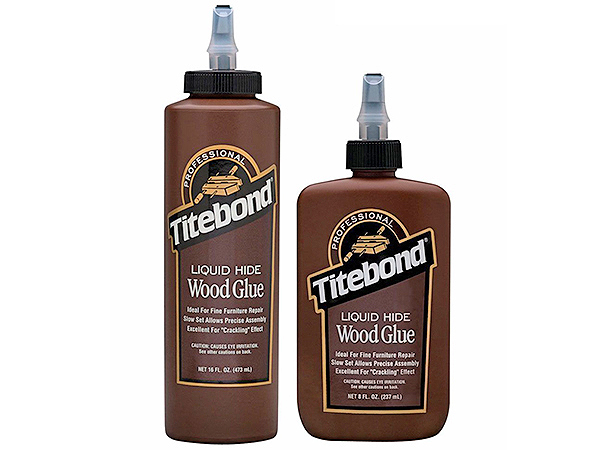
Prior to World War II, all “glue” was hot hide glue. By adding certain chemicals to hot hide glue, it will remain liquid at room temperature, and, even cool, still behave as its upscale brother hot hide glue (1874). This glue has a history documented to 8000 BC, roughly.
Made of rendered-down animal hides (fish glue and isinglass glue are similar; bone glue is the same collagen base, although somewhat inferior), hide glue is the first choice for musical instrument makers, antique conservators and traditional woodworkers.
 Having a modulus of eruption slightly less than epoxy, its only “drawback” is that it is not waterproof. This is usually not a problem when it comes to furniture. If you are worried about a failed glue joint because of moisture, the first thing you need to worry about is your furniture floating away.
Having a modulus of eruption slightly less than epoxy, its only “drawback” is that it is not waterproof. This is usually not a problem when it comes to furniture. If you are worried about a failed glue joint because of moisture, the first thing you need to worry about is your furniture floating away.
Almost all of the furniture I have made over the past 35 years has never got that wet. Hide glue has so many more benefits that make it the best woodworking adhesive ever!
Although it is more expensive than modern glues and that is why it was replaced, it is still far superior. If you have ever used hide glue, then I am preaching to the choir.
Hide glue shrinks as it dries and does not suffer from “creep.” It is largely transparent to stains and finishes. It can be cleaned up any time after it is applied or dried! It washes out of clothing and rags and, more importantly, it is reversible and easily repaired. The swarf does not clog tools or sandpaper. If you make a mistake, heat it to 145º and it becomes thermoplastic and can be disassembled or repositioned.
You can easily do “rub joints” without clamps by applying hide glue to both edges of properly joined boards and rub them together, leave them, and the next day they will be tightly joined. Hammer veneering — laying veneer without clamps — is also accomplished with hide glue.
Give this glue a chance.





